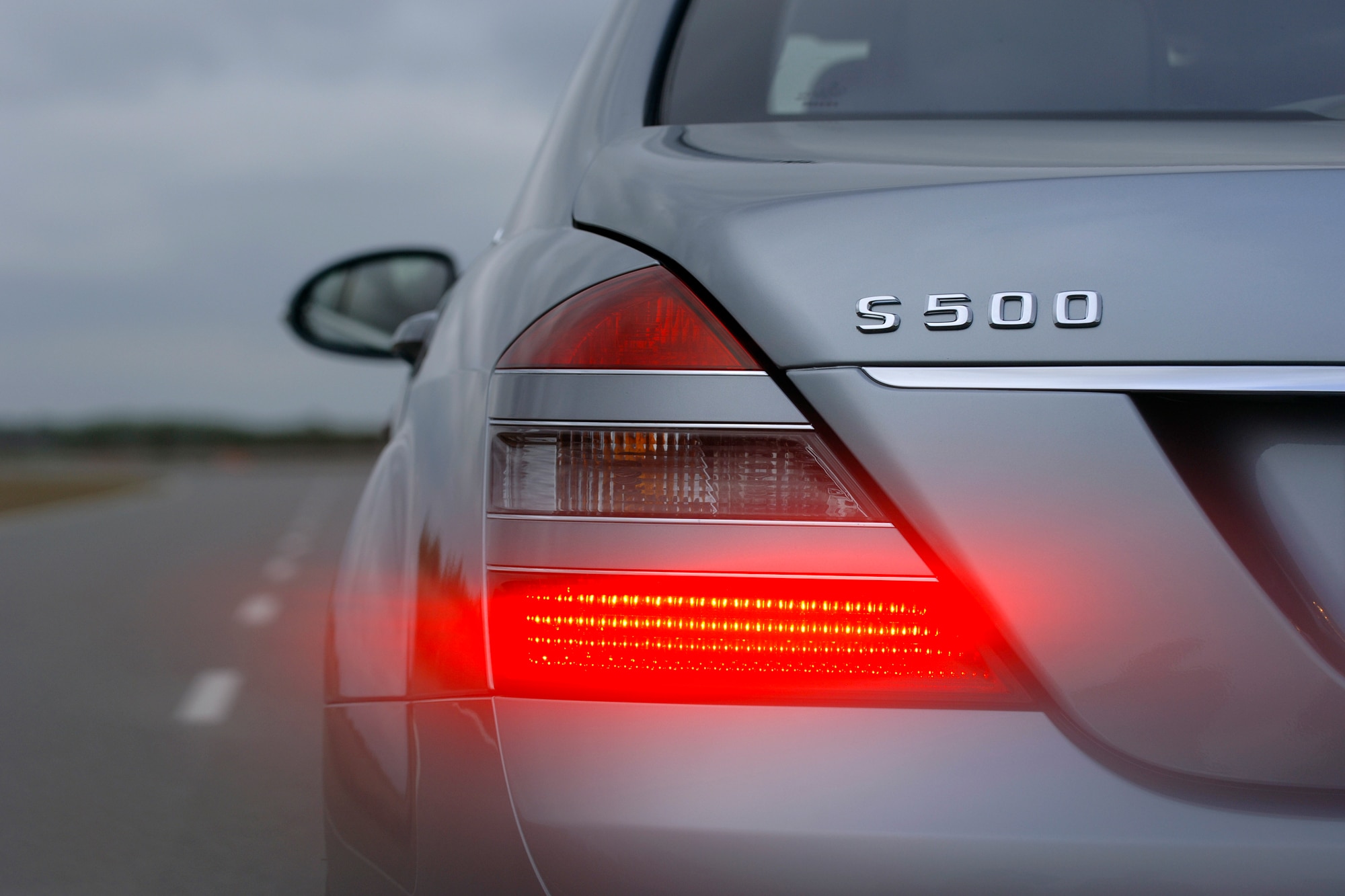Why Do Cars Have Flashing Brake Lights in Europe, But Not in the U.S.?
If you’ve driven in Europe, you may find yourself behind a car that flashes instead of glows.
 Mercedes-Benz
Mercedes-Benz
Article QuickTakes:
If you’re in Europe and you find yourself behind a car that decelerates suddenly, chances are you’ll see its brake lights flash instead of glow a steady red. That’s “adaptive brake lights” in action. Also called “dynamic brake lights,” these systems engage a rapid-flashing mode during heavy braking from speeds above 50 km/h (31 mph).
European automakers and some U.S. and Japanese automakers selling cars in Europe have offered adaptive brake lights for nearly 20 years, believing they help to reduce rear-end collisions by conveying greater urgency to drivers behind them than conventional brake lights. The flashing is intended to prompt other drivers to apply their brakes more quickly, thereby helping to shorten stopping distance.
Rear-end crashes account for 32% of all traffic accidents in the U.S., according to the National Highway Traffic Safety Administration (NHTSA). Even so, automakers can’t offer flashing brake lights on cars sold here. Federal Motor Vehicle Safety Standards (FMVSS) dictate that all lights other than signals must be “steady-burning”.
But Why Do I See Flashing Brake Lights on the Road?
Any flashing brake lights or flashing center high-mounted stop lights you might see on vehicles in the U.S. are aftermarket installations. Drivers who want to install such aftermarket lights should always check with their state’s department of motor vehicles before doing so, as they might not be allowed.
Connecticut, for instance, expressly forbids flashing brake lights. California, recognizing the aftermarket trend, also forbids them, explaining that “excessive use and misuse of flashing lights and warning lights reduces public recognition of their purpose, and decreases the effectiveness of the lights.”
An Effort to Introduce Flashing Brake Lights in the U.S.
Mercedes-Benz petitioned NHTSA in 2005 for permission to test its adaptive brake lights on a fleet of customer cars here in the U.S. The government rejected the request, unpersuaded by the automaker’s claim that the lights improve safety.
At the time, NHTSA also said it was studying various ways to reduce rear-end collisions. Two years later, its own study of “enhanced rear signaling systems” found that a “rear-signaling system that communicates moderate to hard lead-vehicle decelerations has the potential to decrease the incidence of rear-end near-crashes and incidents.” The study, however, noted many variables that could affect real-world usage, including road conditions and whether a driver was distracted.
A Focus on Automatic Emergency Braking
Europe continues to allow automakers to equip cars with flashing brake lights, and American carmaker Tesla recently added the lights to its cars sold there. Here in the U.S. however, automakers and NHTSA have taken no apparent further action on the issue, as they’ve focused instead on other collision-prevention technologies, most notably automatic emergency braking or AEB systems.
Also worth noting is that the Insurance Institute for Highway Safety (IIHS), which has helped to shape U.S. auto safety standards, has not taken a position on dynamic brake lights. The organization instead points to its work spurring the adoption of AEB systems, which it says have been shown to cut police-reported rear-end crashes by half.
While the winds seem to be against flashing brake lights as OEM installations in the U.S., IIHS expects AEB systems to become standard on nearly all new passenger vehicles sold here for the 2023 model year. What’s more, the organization argues that because half of fatal crashes happen at night, dawn or dusk, automakers and regulators should focus on improving front lighting.



